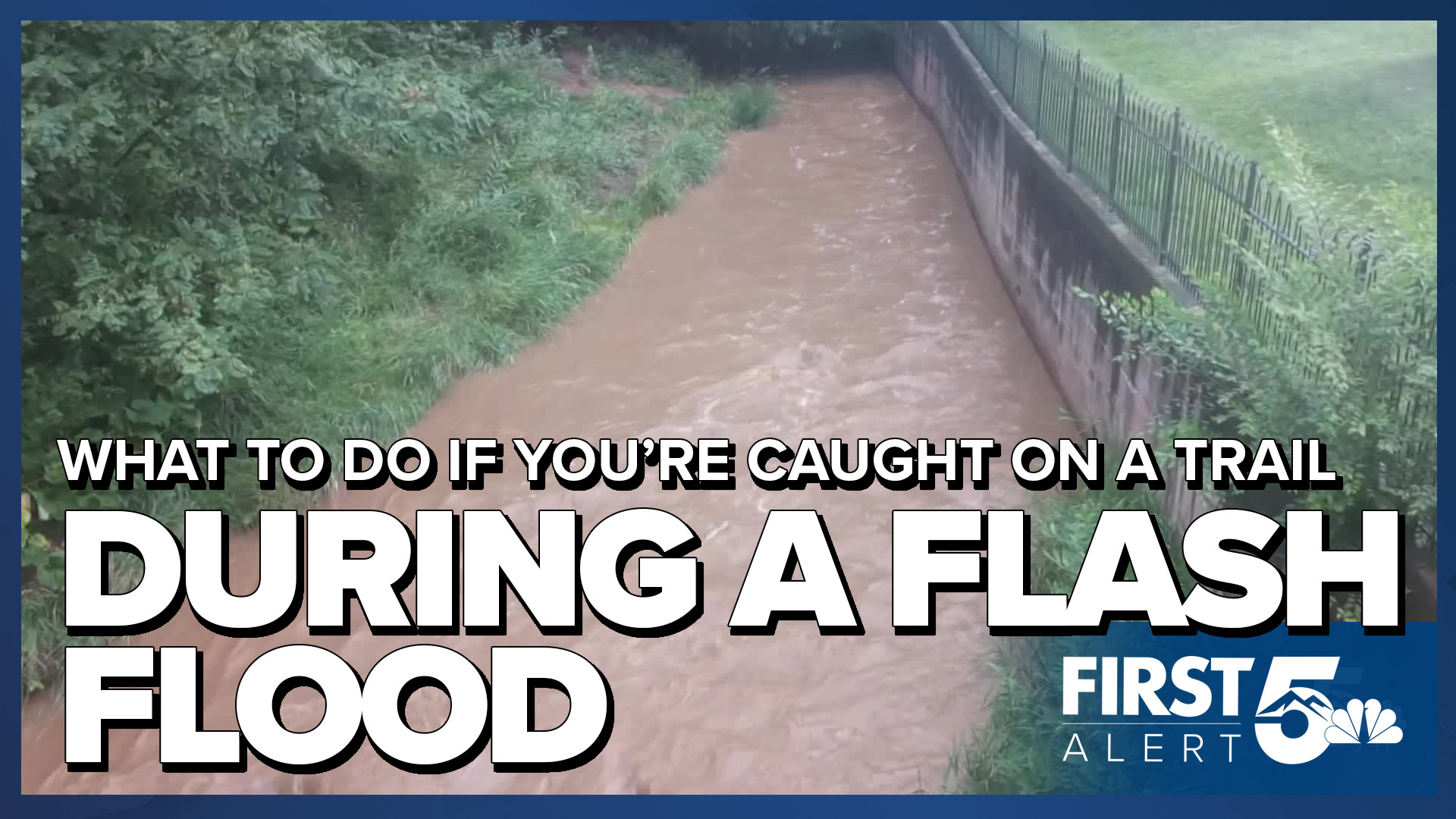With so much rain falling this week across southern Colorado, flash flooding on our hiking and biking trails has been a real concern. The best way to avoid putting yourself at risk is to wait for better weather.
But many Coloradans like to get outside regardless of conditions – or you may be prepared but get caught outside in a storm anyway.
The best – first – step to staying safe, is prevention.
Prevention Tips
- Know when the rain is going to arrive…and avoid hiking at that time.
- Keep an extra close eye on the sky when heavy rain is in the forecast (in general).
- If you hear thunder, see lightning, or see the clouds turn dark grey or black, turn around immediately. Don’t wait to see if it will clear up or keep hiking up!
Assessing Trail Conditions
You can get a better sense of localized trail flood risks by how the trail looks. If it’s already muddy, it’s going to be slippery at best. This is also a good indicator of recent heavy rain. Your biggest clue is recent gouging – chunks of Earth that have recently been carved out of the trail. This is a sign that significant flooding has recently occurred on your trail.
If more rain falls, that flooding could return quickly.
Identifying Safe(r) Zones
There is no spot providing full-safety on a trail in a flash flood. But you can stay a little safer by identifying where the flood channels are.
Look across and up on the trail you’re on and identify dips or carve outs in the terrain. You can also identify these zones as channels of rocks and dead twigs on a steep slope that separate vegetation like grass or trees. These are the spots where water will race down first. Avoid being directly below one of these paths.
Stay Aware of Surroundings
Keep in mind that flash floods often occur away from the zone that’s actively raining. Flooding happens when the ability of the land to absorb water, is lower than the rate and amount of rain that’s falling. Once a flood begins, it will move downhill.
For example, if a heavy thunderstorm hits the eastern upper slopes of Pikes Peak, that water will run downhill and eventually over lower sections of trail – like the lower Barr Trail, or the Manitou Incline. So you should pay attention to these channels and flood zones even if you encounter a storm that isn’t producing rain over you.
Major Flood Safety
In a serious flash flood, water will flow beyond these channels. In this situation: find a solid anchor to hold onto. A large – wide-based tree – or well-anchored rocks or boulders are good examples. Be aware that flash floods can carry debris with them, which can be dangerous. When scanning for a place to take shelter, consider your ability to move upward if needed…for example to higher rocks that would sit above any debris flow.
And while you should ultimately use your best judgment to keep yourself safe, general practice is to avoid descending a trail during an active flood. Water is very powerful and it can sweep you off your feet or make you lose your balance even if it doesn’t look that deep.
Help Your Community
A final tip. In summer, many of the hikers and bikers on our trails are visitors who may be less familiar with Colorado’s weather patterns, flood risks, and safety. If – you – see threatening weather, it’s OK to let others on the trail know it may be unsafe to continue. You can help keep others safe - not everyone is watching the sky.
____
Have a question or story idea you would like the First Alert 5 Weather team to consider? Email: weather@koaa.com
Watch KOAA News5 on your time, anytime with our free streaming app available for your Roku, FireTV, AppleTV and Android TV. Just search KOAA News5, download and start watching.




